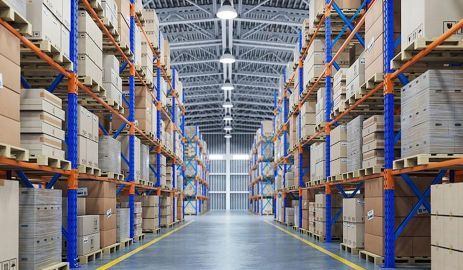
An Insight Into The Future Of Warehousing Industry
As we are progressing towards the era of ever-expanding technology, it is quite safe to say that all the workplaces are in the middle of change. At present, several organizations across every industrial sector face continuous pressure to do maximum with minimum. This is specifically true in warehousing, which is an essential element of supply chain.
The warehouses of future may not look like some scene out of any Bladerunner movie, but, what it is in store for them over the next decades? They will be built on latest effectual process-driven innovations, like automated supply chain, hyperactive robotics, etc. Take a look at what the business owners can expect.
- Logistics Marketplace
The experts offering quality yet affordable RFID warehouse inventory management solutions said warehouses as well as the entire supply chain are moving towards an integrated approach that assists transparency for not only the warehouse but also its consumers and logistics partners.
Efficient capacity management is believed to be the foundation of functional warehouses. Capacity planning is complicated since it requires ongoing evaluation of the four Ps – product, promotion, predicament, and peak. If capacity management had not been a priority, the warehouses would find that obsolete or slow-moving inventory has taken up all its space.
The future warehouses will take complete advantage of automatic capacity management by leveraging the technology for the best, information-driven capacity planning. The result is fewer mistakes that can cause lost revenue, and enhanced space utilization that translates to an optimal bottom line.
- Advances in Visibility and Tracking
The IoT or Internet of Things has already been shaking up the warehouse landscape. It fosters better collaboration and communication between the supply chain partners along with great accountability throughout the board. IoT adoption will develop over the past decade because technology expenditures are now within the reach of multiple warehouses. Other advantages include:
- The capacity to detect risks in the supply chain.
- Offers real-time data on several conditions leading to shipment delays.
- Allows companies to meet the chain-of-custody rules for sensitive cargo.
- Alleviates damaged and misplaced goods,
- Improves forecasting accuracy and inventory management.
The Internet of Things is just one of the many driving forces behind supply chain visibility. Another key component is real-time tracking, assisted by IoT, RFID or radio frequency identification, and other RLTS (real-time location systems).
- Machine Learning and Big Data
Machine learning and big data are not new concepts, but, they are said to transform warehouse operations over the next couple of years. For instance, AI or artificial intelligence has diverse applications. It allows the staff to identify innovative strategies and make smarter decisions regarding them.
Advanced analytics pave the way for user-friendly data in more digestible formats. This makes it easy to extract actionable insights from the data. Data visualization and advanced analytics will play an important role in acquiring cent per cent supply chain visibility.
It may not be easy to implement the latest technologies for the modern-day warehouses. In terms of design, the existing facilities usually have legacy layouts, so, to be successful, they must try to be flexible without increasing the capital expenses in any way. Well, the future seems quite bright since several forward-thinking companies are embracing advancements without any hassle.

